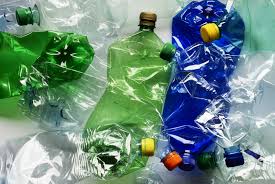A recent study shows that there are over five trillion pieces of plastic floating in the world’s oceans.
The study, published in the journal PLOS ONE, revealed that there is roughly 268,940 tons of plastic pollution across our planet’s five oceans.
It is the first study of its kind to compare all sizes of floating plastic in the world’s oceans from the largest items to small microplastics.
The research was carried out over a six-year period from 2007 to 2013. It covered the South Pacific, North Pacific, South Atlantic, Indian Ocean and waters surrounding Australia.
The majority of the plastic floating in our oceans is “microplastic” – measuring less than five millimetres. The research team estimates that microplastic account for around 92 percent of the floating plastic in our oceans.
An excerpt from the abstract of the study says:
“Using an oceanographic model of floating debris dispersal calibrated by our data, and correcting for wind-driven vertical mixing, we estimate a minimum of 5.25 trillion particles weighing 268,940 tons.”
The authors of the study say that the plastic can pose a threat to marine mammals, birds, and reptiles as they can get tangled and die. Not only that, but the vast amount of small plastics in oceans can break up into particles which are eaten by smaller organisms and then eaten by larger predators.
This means that the micro plastics make their way into the food chain, according to study author Marcus Eriksen, director of research for the Five Gyres Institute.
Marine debris litters a beach on Laysan Island in the Hawaiian Islands National Wildlife Refuge, where it washed ashore. (Susan White/USFWS)
The researchers used nets to collect the smaller fragments of plastic. Larger pieces, such as debris from fishing equipment and plastic bags, buckets, etc., was observed from boats.
Plastic is a buoyant and durable synthetic or semi-synthetic organic solid. Currents can spread its particles across the world’s oceans. Eventually the plastics gather into a vortex of currents, such as the “great Pacific garbage patch” in North Pacific Ocean (almost the size of Texas).
The authors stress that their estimates are “highly conservative, and may be considered minimum estimates.”
They added:
“Our estimates of macroplastic are based on a limited inventory of ocean observations, and would be vastly improved with standardization of methods and more observations.”
Reference:
- Eriksen M, Lebreton LCM, Carson HS, Thiel M, Moore CJ, et al. (2014) “Plastic Pollution in the World’s Oceans: More than 5 Trillion Plastic Pieces Weighing over 250,000 Tons Afloat at Sea.” PLoS ONE 9(12): e111913. doi:10.1371/journal.pone.0111913

